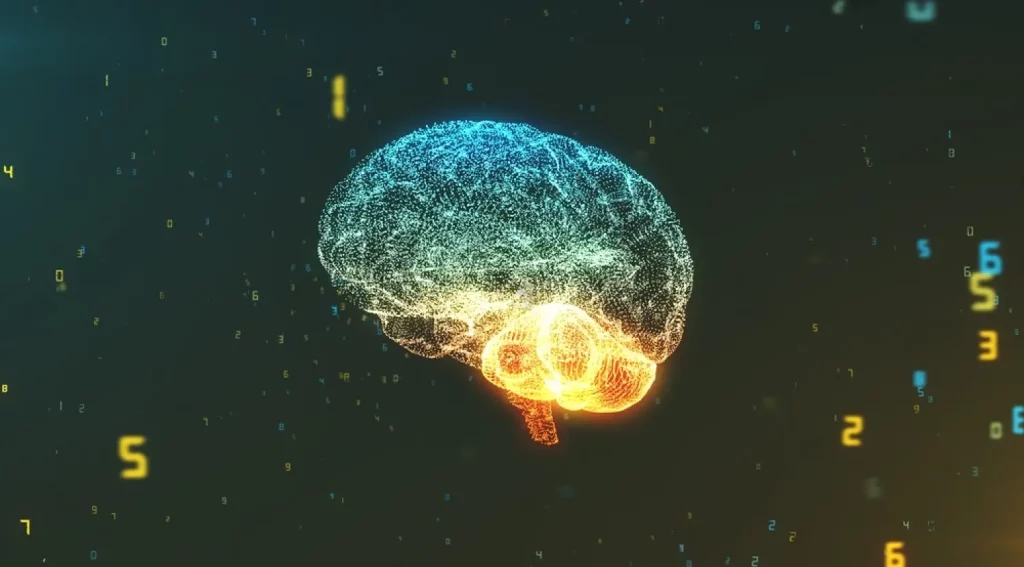Artificial Intelligence (AI) refers to the creation of computer systems that can perform tasks that typically require human intelligence. These tasks include understanding natural language, recognizing patterns, making decisions, and learning from experience. AI systems aim to simulate human cognitive functions and automate complex processes.
The evolution of AI dates back to the 1950s when the term was first coined. Over the years, AI has progressed through different phases, from rule-based systems to statistical methods and machine learning. Notable milestones include the development of expert systems in the 1970s, the rise of neural networks in the 1980s, and the breakthroughs in deep learning in the 2010s.
AI is an integral part of our daily lives, often without us realizing it. Examples include:
Virtual Assistants: Smart speakers like Amazon Echo and Google Home use AI to understand voice commands and provide information or perform tasks.
Recommendation Systems: Streaming services and online stores use AI algorithms to suggest movies, products, or content based on user preferences.
Image Recognition: Social media platforms use AI to identify and tag people in photos automatically.
Natural Language Processing (NLP): Chatbots on websites and messaging apps use AI to engage in conversations with users and provide assistance.
Autonomous Vehicles: AI powers self-driving cars to interpret their surroundings and make real-time driving decisions.
These applications highlight the growing presence of AI in various domains, simplifying tasks, enhancing efficiency, and transforming industries.
Foundations of Machine Learning
Understanding Machine Learning vs Traditional Programming:
Machine learning differs from traditional programming by enabling computers to learn from data rather than being explicitly programmed for every task.
In traditional programming, developers write explicit instructions, whereas in machine learning, algorithms learn patterns from data and make predictions or decisions based on those patterns.
Types of Machine Learning:
Supervised Learning:
In this type, the algorithm is trained on a labeled dataset where it learns to map inputs to corresponding outputs. It’s used for tasks like classification and regression.
Unsupervised Learning:
Here, the algorithm deals with unlabeled data, identifying patterns and structures within it. Clustering and dimensionality reduction are common tasks.
Reinforcement Learning:
This involves an agent learning by interacting with an environment. The agent takes actions to maximize rewards and learns from the consequences of those actions.
Exploring Decision Trees and Basic Algorithms:
Decision Trees:
A decision tree is a graphical representation of a decision-making process. It’s composed of nodes that represent decisions, branches that represent outcomes, and leaves that represent final decisions or predictions.
Decision trees are used in classification and regression tasks.
Basic Algorithms:
Simple algorithms like Linear Regression (predicting numeric values) and Logistic Regression (classification) serve as foundational concepts.
They provide a starting point to understand how algorithms learn from data and make predictions.
These foundational concepts form the basis of machine learning, enabling computers to learn and generalize patterns from data for a wide range of tasks.

Demystifying Data
Role of Data in AI Development:
Data is the lifeblood of AI development. AI algorithms learn patterns from data, which guide their predictions and decisions. High-quality, diverse, and relevant data is crucial for training accurate and robust AI models. Without sufficient data, AI systems may struggle to generalize well to new situations.
Data Types: Structured, Unstructured, and Semi-Structured:
Structured Data:
This data type is highly organized and follows a fixed format, usually residing in databases or spreadsheets. Each piece of data has a defined data type. Examples include tabular data like databases.
Unstructured Data:
Unstructured data lacks a fixed format and is more complex to analyze. It includes text, images, audio, and video files. Natural Language Processing (NLP) and Computer Vision are used to extract insights from unstructured data.
Semi-Structured Data:
This data type has some organization but doesn’t fit neatly into tables. It often includes metadata and can be stored in formats like JSON or XML.
Basics of Data Collection and Cleaning:
Data Collection:
Gathering data involves selecting relevant sources, designing data collection methods, and acquiring the data. This step influences the quality of your AI model, so it’s important to ensure data is representative and unbiased.
Data Cleaning:
Raw data often contains errors, missing values, and inconsistencies. Data cleaning involves removing or correcting errors, handling missing data, and ensuring uniformity. Clean data is essential for accurate model training.
Demystifying data is a critical step in AI development. Understanding data’s role, types, and the process of collecting and cleaning it ensures that AI models have a strong foundation to learn from and make informed decisions.
Neural Networks
What Are Neural Networks?
Neural networks are computational models inspired by the structure and function of the human brain’s interconnected neurons. They consist of layers of interconnected nodes, or neurons, that process and transmit information. Neural networks are designed to learn patterns and relationships in data, making them a fundamental building block of modern AI and machine learning.
Neurons, Layers, and Activation Functions:
Neurons:
Neurons are the basic computational units in neural networks. Each neuron receives inputs, applies weights to those inputs, and produces an output through an activation function.
Layers:
Neural networks are organized into layers, which include an input layer, hidden layers, and an output layer. Hidden layers enable the network to learn increasingly complex features from data.
Activation Functions:
Activation functions introduce non-linearity to the network, allowing it to capture complex relationships in data. Common activation functions include ReLU (Rectified Linear Activation) and Sigmoid.
Building Your First Simple Neural Network:
Building a simple neural network involves the following steps:
Define Architecture: Choose the number of input, hidden, and output neurons. This depends on the problem you’re solving.
Initialize Weights: Assign initial weights to the connections between neurons randomly.
Forward Propagation: Process input data through the network, applying weights, activations, and passing information from layer to layer.
Calculate Loss: Compare the network’s output to the desired output using a loss function.
Backpropagation: Adjust weights using gradient descent to minimize the loss. This process involves calculating gradients and updating weights iteratively.
Training: Repeat forward propagation, loss calculation, and backpropagation over multiple epochs until the model’s performance improves.
This introduction lays the groundwork for understanding neural networks, their components, and the process of building and training them to perform specific tasks.
Deep Learning

Diving into Deep Neural Networks:
Deep Neural Networks (DNNs) are an advanced type of neural network with multiple hidden layers. These layers allow DNNs to learn hierarchical representations of data. Deep learning leverages DNNs to automatically extract features from raw input data, enabling the network to learn complex patterns and relationships. Deep learning has revolutionized various fields, including computer vision, natural language processing, and more.
Convolutional Neural Networks (CNNs) for Images:
CNNs are a specialized type of deep neural network designed for image analysis. They excel at tasks like image classification, object detection, and image segmentation.
CNNs use convolutional layers to automatically learn spatial hierarchies of features. Convolutional filters scan the input image, detecting edges, textures, and higher-level features.
Pooling layers down sample the feature maps, reducing the model’s sensitivity to small variations and enhancing its ability to recognize patterns in different positions.
Recurrent Neural Networks (RNNs) for Sequences:
RNNs are designed to handle sequential data, such as time series, text, and speech. They have memory cells that maintain information over time steps.
RNNs process sequences by taking the output from the previous step as input for the current step, allowing them to capture temporal dependencies.
Long Short-Term Memory (LSTM) and Gated Recurrent Unit (GRU) are specialized types of RNNs that address the vanishing gradient problem and improve the modeling of long-range dependencies.
This introduction to deep learning provides insight into the powerful capabilities of deep neural networks, including their applications in image analysis and sequential data processing.
AI Tools and Frameworks
Overview of Popular AI Frameworks:
TensorFlow: Developed by Google, TensorFlow is an open-source framework for building and training various machine learning models, including neural networks. It provides a flexible ecosystem for numerical computation and offers tools for both beginners and experts.
PyTorch: Created by Facebook’s AI Research lab, PyTorch is known for its dynamic computation graph, making it particularly suitable for research and experimentation. It offers intuitive debugging and strong support for dynamic neural network architectures.
Keras: Keras is a high-level neural networks API that runs on top of TensorFlow, Theano, or Microsoft Cognitive Toolkit (CNTK). Keras abstracts the complexity of building neural networks, making it user-friendly for beginners.
Setting Up Your Development Environment:
Install Python: Most AI frameworks are Python-based. Install Python on your system if it’s not already available.
Install Frameworks: Install the chosen framework(s) using package managers like pip or conda. For example, `pip install tensorflow` or `pip install torch`.
IDE or Text Editor: Choose an Integrated Development Environment (IDE) like PyCharm, Visual Studio Code, or Jupyter Notebook for coding and experimentation.
GPU Support (Optional): If you plan to work with large datasets or complex models, consider using a GPU for faster computations. Install GPU drivers and framework-specific GPU versions if available.
Writing Your First AI Code:
Load Data: Start with a simple dataset. For instance, the MNIST dataset for handwritten digit classification.
Define Model: Create a neural network model using the chosen framework. Define layers, activation functions, and connections.
Compile Model: Configure the model with optimizer and loss function for training.
Train Model: Use your data to train the model. Feed input data and expected output to the model, adjusting weights through backpropagation.
Evaluate Model: After training, evaluate the model’s performance using test data.
Make Predictions: Use the trained model to make predictions on new, unseen data.
This overview provides a starting point for working with AI frameworks, setting up your environment, and writing your first AI code. It’s a step toward hands-on AI development.
Practical Applications:
AI in Image Recognition and Classification:
Image recognition and classification involve identifying objects, people, or features within images. AI models, especially Convolutional Neural Networks (CNNs), excel in this domain.
Applications include autonomous vehicles recognizing traffic signs, medical imaging diagnosing diseases, and security systems identifying faces for access control.
Chatbots and Natural Language Processing (NLP):
Chatbots are AI-driven systems that simulate human conversation. They use Natural Language Processing (NLP) to understand and generate human language.
Applications range from customer support chatbots to virtual assistants like Siri and Google Assistant. NLP is also used in sentiment analysis, text summarization, and language translation.
Introduction to Recommender Systems:
Recommender systems suggest items to users based on their preferences, behaviors, and patterns. They’re used in e-commerce, content streaming, and more.
Collaborative filtering and content-based filtering are common approaches. Collaborative filtering recommends items based on user behavior, while content-based filtering suggests items similar to those a user has liked.
These practical applications showcase the versatility of AI, demonstrating how it’s integrated into various domains to solve real-world challenges and enhance user experiences.
Ethical Considerations
Importance of AI Ethics and Responsible AI Development:
AI systems have significant societal impact, necessitating ethical considerations to ensure their responsible use. Ethical AI development involves aligning technology with human values, rights, and well-being.
Responsible AI considers the potential consequences of AI deployment, including unintended bias, job displacement, and the amplification of existing inequalities.
Addressing Bias and Fairness in AI Models:
Bias in AI models can lead to unfair outcomes, reinforcing existing biases present in the training data. It’s crucial to actively identify and mitigate biases to ensure equitable treatment.
Fairness metrics, bias detection tools, and diverse training data are approaches to enhance fairness in AI. Transparency in model development and decision-making is also essential.
Privacy and Security Concerns in AI Applications:
AI systems often require access to large amounts of data, raising concerns about user privacy. Unauthorized access or breaches can lead to data leakage and security vulnerabilities.
Privacy-preserving techniques like differential privacy and secure multi-party computation aim to protect user data while still enabling effective AI models.
Addressing ethical considerations in AI development is essential to foster trust and ensure that AI technologies benefit society without compromising privacy, fairness, or security.

Future of AI for Beginners
Exploring Emerging AI Trends:
As AI continues to advance, several trends are shaping its future:
Explainable AI (XAI): The need for transparency in AI decisions drives the development of models that provide understandable explanations for their outputs.
AI in Healthcare: AI is transforming healthcare through medical image analysis, personalized treatment recommendations, and drug discovery.
Autonomous Systems: The growth of self-driving cars, drones, and robots demonstrates the increasing role of AI in creating autonomous systems.
AI for Sustainability: AI is used to address environmental challenges, such as optimizing energy consumption and managing natural resources.
Opportunities and Challenges in AI:
Opportunities: AI presents vast opportunities across industries. Enhanced automation, improved decision-making, and the ability to process and analyze large datasets are key benefits.
Challenges: Challenges include ethical concerns, bias in AI, job displacement due to automation, and potential misuse of AI technologies. Striking a balance between innovation and societal well-being is crucial.
How to Continue Your Learning Journey:
Stay Curious: AI is a rapidly evolving field. Stay curious, explore new developments, and keep learning about the latest techniques and breakthroughs.
Online Courses and Resources: Enroll in online courses or access tutorials and resources from platforms like Coursera, Udacity, and Khan Academy to deepen your knowledge.
Hands-On Projects: Apply your knowledge by working on hands-on projects. Experiment with AI frameworks, build your models, and solve real-world problems.
Networking: Connect with AI enthusiasts, attend conferences, webinars, and workshops to stay connected with the AI community.
Books and Research Papers: Explore AI literature, research papers, and books to gain a deeper understanding of advanced topics and techniques.
The future of AI holds exciting possibilities, and as a beginner, embracing emerging trends, understanding the opportunities and challenges, and adopting a lifelong learning approach will allow you to contribute to and benefit from this transformative field.







